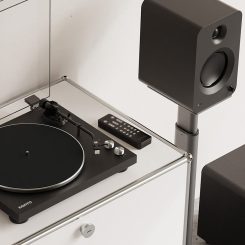Pucker up, Buttercup! Hoppy beers have almost obliterated everything else on the market for years now, and there’s nothing wrong with enjoying a triple IPA every now and then. But beer trends are a way for us to experiment, figure out what we like and don’t like, and surprise our taste buds with exciting new experiences. Or, in the case of sour beers, maybe terrorize them slightly.
Sour beer sales rose a whopping 43% in 2018 and again by 40% in 2019. Clearly sour beers are climbing rapidly in terms of popularity, but that doesn’t mean they’re for everyone. Here’s what you need to know about this lip-crinkling beverage that’s sweeping into supermarket aisles everywhere.
What Is Sour Beer?
At their most basic, sour beers are exactly what they sound like — beers intentionally made to taste tart and acidic. While they may be relatively new to the spotlight in the U.S., the practice of making sour beers dates back centuries. In fact, Trappist monks have been brewing sour beers for hundreds of years.
Like most delicious things, especially in the world of alcohol, sour beers happened by accident. Back in the day, when beer was stored in big barrels for fermentation, it was often left open to the elements. That allowed wild yeast and bacteria to come in and do their thing. The same way that different herbs and spices give food different flavor profiles, varying strains of yeast and bacteria give beer different flavors.
Today’s brewers are far more purposeful about what they’re making. Sour beers are made using meticulously crafted recipes, with the vats and barrels placed far away from other beers that could be ruined by a stray sprinkle of wild yeast. Each brewer has their own signature combination (or combinations, depending on how many sour beers they make) of bacteria like Pediococcus and Lactobacillus, as well as Brettanomyces (affectionately called “Brett”), a type of yeast.
You’ll also find a lot of fruity sour beers. This is awesome if you’re the kind of person who loves to kick back during summer and sip on something that’s perky yet recognizable. Lemon, grapefruit, lime, orange — they all contribute citric acid, which is another way of amping up the sour element.
Styles of Sour Beer
Okay, we could give you an entire novel about the varying styles of sour beer, but you’re here to find out what to drink, not how to major in craft brewing, right? Right!
So, here are the basics, to give you an idea of what you might want to grab the next time you’re at the liquor store.
- Flemish or Flanders Red: The Mac Daddy of sour beers. This legendary tipple has been likened to equally legendary Burgundy wine from France, thanks to a long history of excellence and beers that are seductively complex. Look for deeper fruit flavors like currant and black cherry and a decent amount of body thanks to oak aging.
- Gose: A coriander-infused sour made in Goslar, Germany, using lactic acid bacteria. Expect lemony flavors and a bit of salinity. Drink it with a slice of fruit tossed in. If you like margaritas, you’ll probably like Gose.
- Gueuze Lambic: Lighter, more delicate, and a nice introduction to sours for beer drinkers who aren’t sure tart brews are for them. These are spontaneously fermented, meaning the wort is left exposed and well, whatever happens happens.
- Oud Bruin: Spawned in the same region of Belgium as Flemish/Flanders Reds, but these are darker and aged in stainless steel instead of oak. It’s an easy drinker, with an overall maltiness combined with a delectable sour edge.
- Berliner Weisse: This is a lower-alcohol brew (it usually sits at around 3% ABV), and it pours cloudy, so expect it to look a bit different in the glass. If you like wheat beers like Hefeweizen, Berliner Weisse would be a good introduction to sours. Oh, and this was the most popular beer in Berlin in the late 1800s, and that seems like a pretty good endorsement to us. In bars, you may see it served with a shot of sweetened fruit syrup to help mellow things out, so feel free to experiment with syrups and fruit at home.
How to Pair Sour Beers
Deciding what to eat with a sour beer can be tricky. On one hand, they can cleanse your palate and cut through big, fatty flavors to add some balance to a meal. On the other hand, the funkier sours can blow your food right out of the water. Our recommendation? Keep it simple. Think BBQ, grilled goodies, any kind of fruit, or put all those together and serve grilled plums with some sticky-sweet ribs. But hey, sours also work with seafood and salads, so you can truly have a summery bash worth remembering.
Here’s your quick takeaway for those who need a TLDR: Sour beers aren’t for everyone and those who love them don’t even necessarily want them every day, but they can be a delicious, intriguing, and refreshing addition to your regular beer rotation. And you just may fall in love. Start with a Gose or Berliner Weisse for a less jarring introduction, and try drinking it alongside a big bowl of lemony mussels. Pucker-worthy indeed!





















